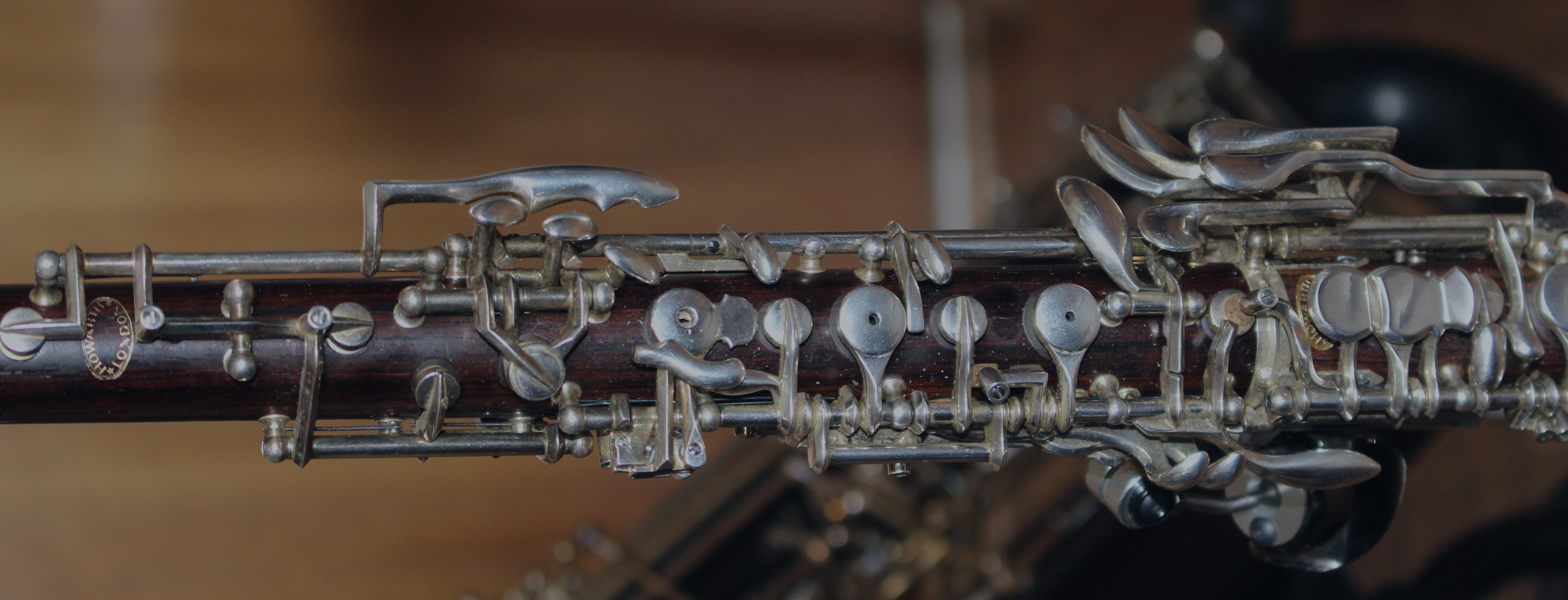There is something magical about musical instruments: we pick them up, tune into their mode of communication, and we transcend into a different form of life. The instrument is what constitutes this possibility of a different thought and voice: it is a torch into our inner being. Trying a new instrument for the first time is a peculiar encounter: we rotate the instrument, observe it from all angles, pluck it, blow it, stroke it, shake it, hit it and generally explore what it offers us in terms of interesting expression. This process can take hours, weeks, years.
Having become familiar with the instrument, we roam its expressive scope, as if exploring a landscape that is covered by a deep fog, but there within we come upon beautiful local areas that entice and attract. This is about finding the constraints of the instrument, a path to mastery that requires time and effort: a process of discovery, of research. Not only are instrumental types different, and we operate with complex classifications of musical instruments (see the Musical Organics blogpost), but every individual instrument is unique! No two instruments are the same when the come from the luthier or the factory, and they further develop in your hands, gaining a unique form that separates it from other instances of the same type from the same maker. This is the instrument’s haecceity, its unique qualities, place and behaviour in the world.
 Christopher Redgate's 21st Century Oboe
Christopher Redgate's 21st Century OboeWhen discussing these things with people, I have been seeking a vocabulary that covers how we talk about our instruments. A terminology that is similar to how ludologists might deliberate about the “gameplay” of a computer game, as its general feel, play, navigation, aesthetics, game mechanics, pace, possibilities, etc. What analogous word to “gameplay” can we use in organology? Design, playability, character, tone, affordances, constraints, remediation, ergonomics, workflow and expressiveness are not ideal words as they are specific, limited and often technical. I became interested in developing a terminology based on the function of the instruments, their working nature and character. Ergos is the Greek term for work (and we can see the direct etymological relation to “work”, “werk”, “verk” in other European languages). It also relates to the term “organ” which is Greek for instrument, but one that is equially a bodily organ (like the heart), a tool (like the hammer) or a musical instrument (like the harp). So instruments work, they operate and are operated; they work and are worked. Instruments are functional tools, they perform functions and are pregnant with undiscovered potential. This is the dynamic range of the instrument, or its dynamis.
In the search for terminology I therefore began exploring whether the term ergodynamics would work as a term describing the potential of an instrument, its range, scope, expressivity. Like the ludologist would say “this game has a good gameplay” we musicians might now describe an instrument as having interesting ergodynamics. This is referring to the mystery, depth, hidden features, discoverability embedded in the object. And what amazing objects musical instruments are! Humans rarely engage with other objects this way, although I must admit that I have talked with skateboarders about skateboards, chefs about knifes, dentists about drills, archers about bows and whilst those are also quite obsessed with their objects, the musical instrument constitutes something more: it’s a way to express inner states withouth the crude and clumsy formulations of language. Human thinking without having to put the world into the rigid categories of symbols.
Related terms became ergomimesis, ergography, and ergophor.
Coming up with a group of descriptive terms for musical instruments as a contribution to organological vocabulary is a strange thing to do, so in my self-doubt I discussed with colleagues, with Greeks, with instrumentalists, with linguists and with luthiers. I presented a paper at a conference, wrote an article in a journal, and gave a few talks and workshops about this, all with the aim to see if people could help me realising how ridiculous this excercise was. Well, they didn’t. So I used the concepts in my forthcoming book, Sonic Writing. More on that book very soon!
References:
Ergomimesis: Towards a Language Describing Instrumental Transductions
In the proceedings of the 2018 International Conference on Live Interfaces in Porto.
Ergodynamics and a Semiotics of Instrumental Composition
Published in the Tempo Journal in January 2019.
Sonic Writing: Technologies of Material, Symbolic and Signal Inscriptions published by Bloomsbury Academic in 2019. [Here is a 35% discount code: “GLR MP6”]
If you found this post intersting, you can share it or follow me on Twitter!